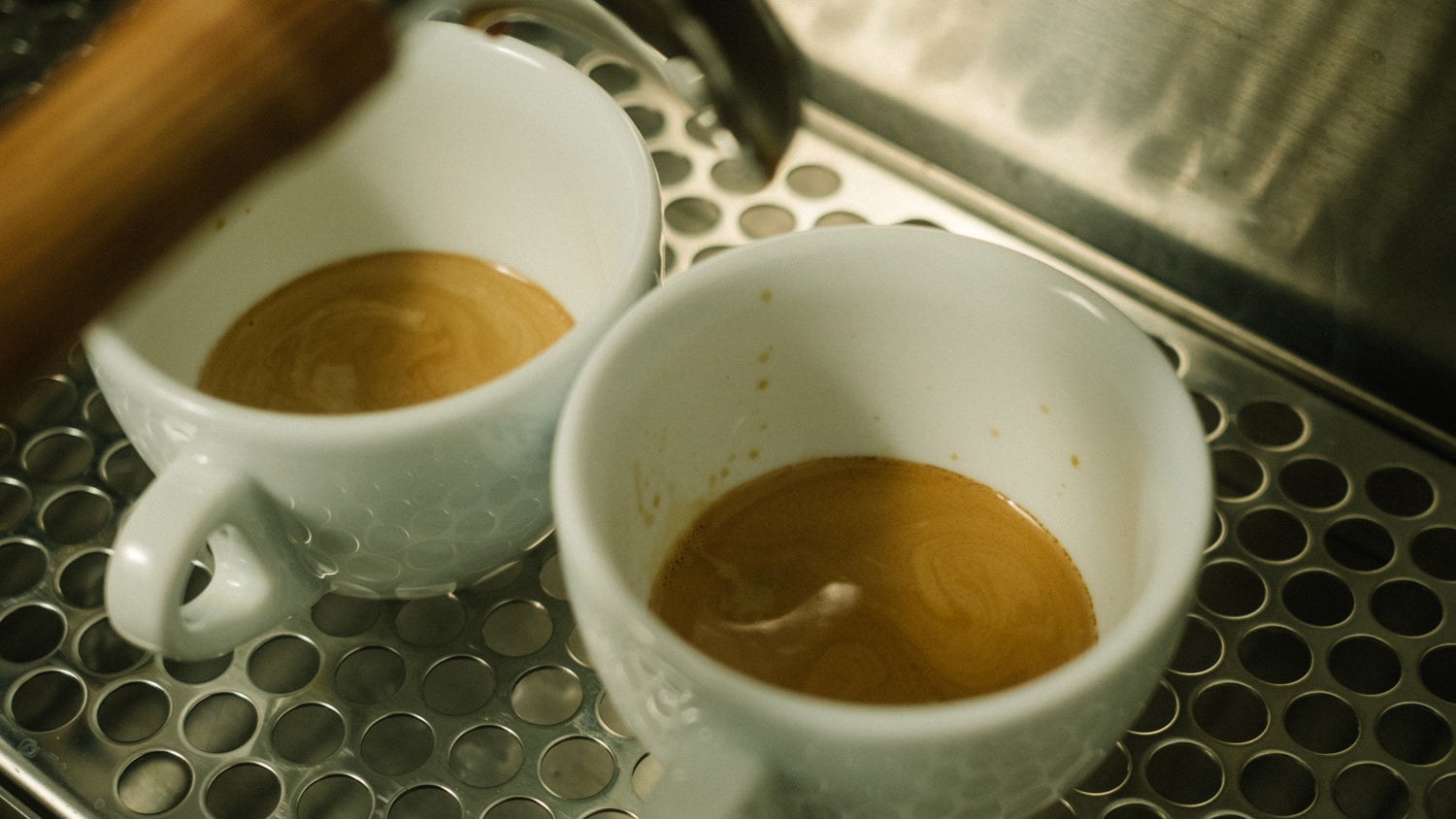What is the perfect espresso from a portafilter machine?
A full-bodied, velvety espresso with a thick crema – for many coffee lovers, this is the pinnacle of brewing. But extracting the perfect espresso with a portafilter machine requires know-how, patience, and a bit of practice. We'll show you the most important factors for the ideal result in the cup. And one thing up front: we're talking about espresso from dark roasts here, because you can also make an espresso from a medium or light roast , but they naturally behave differently. (Although you can also tweak the same variables: grind size, coffee quantity, temperature, etc.)
The bean makes the difference
First of all: Your espresso can only be as good as the beans you use. This means that even the best barista can't conjure up a good espresso from poor beans. So keep the following in mind:
- Freshness: Your beans should ideally be used 1 to 6 weeks after the roast date. (The roast date for our beans is approximately 1 year before the best-before date.)
- Roasting: It is best to choose a dark roast – beans that are roasted specifically for espressos.
- Origin and quality: A good blend usually consists of coffees from several countries, achieving a balanced flavor. Make sure there aren't too many countries. Your blend should contain a maximum of four different coffees. Arabica beans often offer more aromatic complexity, while Robusta beans in the blend provide more crema and a richer flavor.
Tip: Store your coffee in a cool, dry and airtight place – but not in the refrigerator!

The right mill – your most important tool
You won't make the perfect espresso without a precise grinder. Why? Because the grind determines how well the water from the portafilter machine flows through your coffee grounds. Your grind should be fine; the ground coffee should feel like cocoa or cinnamon between your fingers. Expressed in micrometers, the grind for espresso is around 250 micrometers – or a quarter of a millimeter. And the important thing is that all the particles have to be basically the same size. And you can only achieve that with a good grinder. Your grinder should be electric or hand-operated and have a disc or conical burr. Whether the burr is made of ceramic or metal is not really important; both have their advantages and disadvantages.
Note: An espresso (25 ml) should run through in 25-35 seconds.
Dosage: How much coffee goes into the portafilter?
- Standard: 17-19 for a double espresso (approx. 34 to 60 ml spout)
- Important: Use a precision scale to weigh powder and drink
Pro tip: The brew ratio is crucial. A good starting ratio is 1:2 (e.g. B. 17 g coffee makes 34 ml espresso in 30 seconds).
Distributing and tamping: Uniformity is everything
To ensure the water flows evenly through the evenly ground coffee, you should distribute it evenly in the portafilter. Use a water tamper to avoid lumps in the ground coffee. Then, tamp, or compress, the coffee grounds. Pay attention to the pressure (approximately 15 to 20 kg) and keep the tamper horizontal; otherwise, channeling will occur due to a slanted coffee puck.
The portafilter machine: temperature, pressure and timing
For your machine to deliver consistently good results, you need a temperature between 92 and 96 degrees Celsius and a minimum pressure of 9 bar. Some machines offer a short pre-infusion phase—this is good for consistent extraction. Also pay attention to consistent flow times and regularly clean the groupheads, shower screens, and seals.

Perfect crema and taste – this is how you recognize a successful espresso
A perfect espresso:
✅ Has a hazelnut-brown crema, dense and fine-pored
✅ Tastes balanced – sweet, strong, slightly bitter, with pleasant acidity
✅ Leaves no dull dryness in the finish
✅ Is concentrated, but not over-extracted or acidic
The role of water quality
Although it is often underestimated, water is the most important ingredient in your espresso. After all, the drink consists of over 90 % of it! Therefore, you should make sure to use fresh, preferably soft water . Hard tap water can not only negatively affect the taste (it accentuates bitterness and suppresses delicate aromas), but over time, it can also cause limescale in your coffee machine.
Filtered water with a hardness of about 4–6 is optimal ° dH (German degrees of hardness). You can use special water filters (e.g. You can use filters (e.g., from Brita, BWT, or systems integrated into the mains water line) to optimize your water. This ensures better taste and extends the lifespan of your portafilter machine. If you're more advanced, you can also make your own water: Use demineralized or distilled water and Apax Labs drops. You can purchase the drops from our online shop .
A brief look at machine types
Not every portafilter machine is the same – and operation also differs slightly depending on the model. There are basically three common types:
- Single-circuit machines: These machines have a single heating circuit. This means you have to switch between brewing and steaming, which takes time—but they're ideal for beginners and no problem for just espresso.
- Dual circuit: There are separate circuits for coffee and steam, which makes simultaneous operation (espresso + milk frothing) possible.
- Dual boiler: The professional standard. Two separate boilers enable maximum temperature stability and consistent performance – perfect for latte art fans and heavy drinkers.
Which model you have doesn't affect the espresso itself – but it does affect how efficiently you can work and how much control you have over temperature and pressure.

Sources of errors and troubleshooting
|
problem |
Possible cause |
Solution |
|
Espresso runs too fast |
Grinding too coarse or too little powder |
Grind finer or increase quantity |
|
Espresso runs too slowly |
Grind too fine or tamped too tightly |
Grind coarser or check tamper pressure |
|
Taste too bitter |
Over-extraction, too hot |
Check brewing temperature, brew faster |
|
Taste too sour |
Under-extraction, too short time, wrong temperature |
Grind finer, extract longer or increase temperature |
Conclusion: Perfection through practice
Espresso with a portafilter machine is a craft – the better you understand your beans, grinder, and machine, the more consistent your results will be. Practice regularly, document your settings, and adjust them gradually. Only change one variable at a time, otherwise, you won't know what went wrong in the end. You'll get better in no time – and the perfect espresso will soon no longer be a coincidence for you, but rather a standard!




